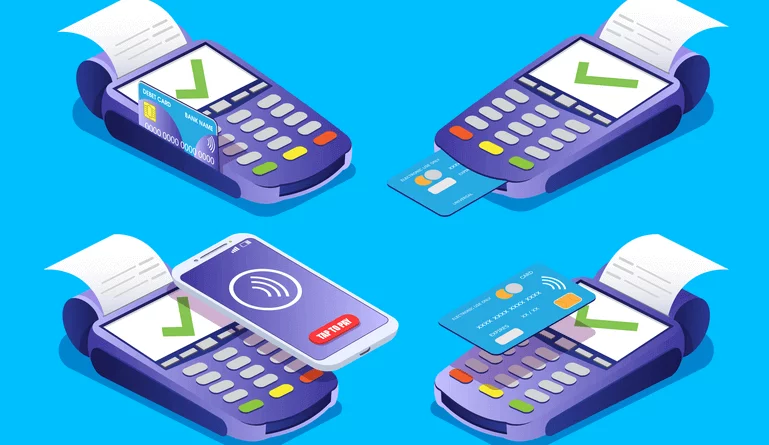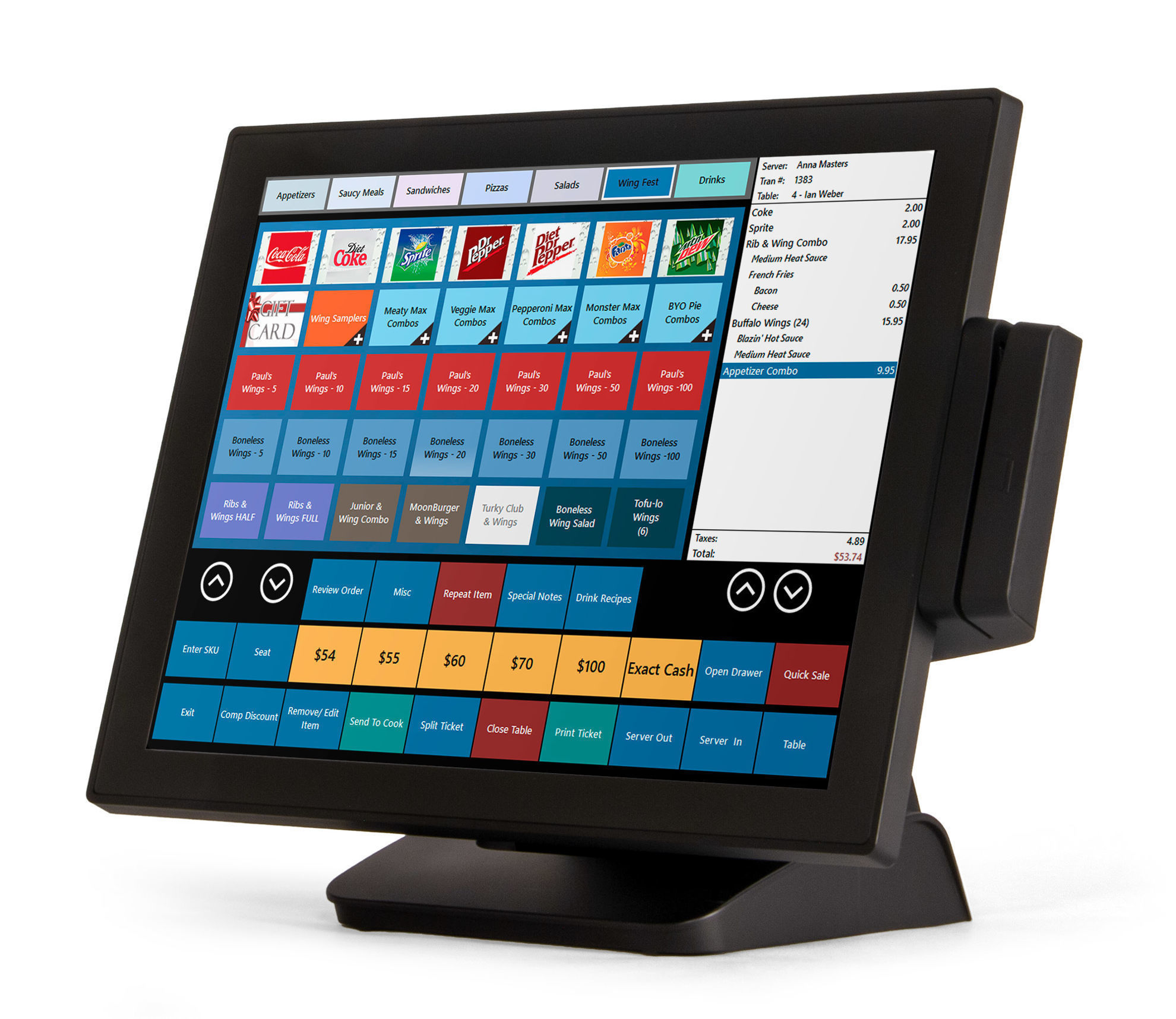Affordable Restaurant POS: A Sales Management Service Designed To Simplify Deals For Small Enterprises
Functions and Benefits
When diving into the world of a Point Of Sales System for small company, it's not practically calling up sales. What genuinely sets these systems apart is the abundant tapestry of features woven into their style, each crafted to raise the everyday grind of a small company owner. Think of a tool that not only tracks sales however likewise reads the pulse of your stock like a seasoned detective. Intriguing, right?
Core Functions That Transform Daily Operations
- Inventory Management: Gone are the days of frenzied stock checks. Modern POS systems automatically upgrade your stock, notifying you when items run low. It's as if your system whispers, "Hey, time to reorder!" before you even realize it.
- Sales Reporting: Numbers can be complicated, however a good POS system presents sales data in clear, digestible formats. Charts, graphs, and real-time dashboards make it simple to find trends and make notified choices.
- Staff member Management: Scheduling shifts and tracking hours end up being seamless. This feature not just saves time however minimizes human mistake, a continuous thorn in the side of small company owners handling lots of hats.
- Client Relationship Management (CRM): Imagine understanding your consumers in addition to your finest good friends. POS systems can save consumer choices and purchase history, allowing customized marketing that feels authentic, not required.
Benefits That Speak to the Heart of Small Company Requirements
Why do these features matter? Due to the fact that behind every transaction is a story, and a properly designed POS system assists you inform it much better. It's not almost performance; it's about empowering you to concentrate on what genuinely matters-- your clients and growth.
| Feature | Benefit | Effect on Service |
|---|---|---|
| Real-time Inventory Updates | Prevents stockouts and overstocking | Enhances capital and consumer fulfillment |
| In-depth Sales Analytics | Determines very popular items and peak hours | Informs marketing and staffing techniques |
| Integrated Payment Processing | Speeds up checkout and decreases errors | Enhances client experience and constructs trust |
| Customer Data Management | Enables targeted promos and loyalty programs | Enhances repeat organization and customer retention |
Ever Wondered How This Plays Out in Reality?
Photo a charming cafe owner, managing orders throughout an early morning rush. The POS system not just processes payments promptly however signals her to a dwindling supply of her signature beans. She reorders flawlessly, preventing a customer dissatisfaction. Little moments like this, powered by smart innovation, become the unrecognized heroes of company success.
Could your little business flourish with a tool that feels more like a partner than simply a machine? The best Point Of Sales System does not just handle transactions-- it informs the story of your organization, unlocking prospective concealed in daily data.
Checking out the Kinds Of Point Of Sales Systems for Small Service
Picture walking into a bustling café, the barista balancing orders while the register sings the song of smooth deals. Behind that consistency lies the option of a POS system, tailored to fit the rhythm of business. What kinds of systems genuinely empower small organizations to prosper? Let's dissect the landscape.
1. Conventional POS Systems
These are the sturdy old-timers, often hardware-heavy and locally installed. They boast robust performance however in some cases seem like lugging a typewriter into the digital age. While they provide reliability, their rigidness can journey up companies craving agility and remote gain access to.
- Pros: Fast processing, offline capability, detailed inventory management.
- Cons: Preliminary hardware financial investment, limited versatility for scaling or mobility.
2. Cloud-Based POS Systems
Think of these as the nimble acrobats of the POS world. Cloud-based systems operate through internet, enabling business owners to handle sales and stock from virtually anywhere. This flexibility, however, dances in tandem with dependency on steady internet connections-- a double-edged sword for some.
- Advantages: Real-time updates, scalability, integration with multiple devices.
- Downsides: Vulnerability during internet blackouts, continuous subscription charges.
3. Mobile POS Solutions
Have you ever stood in line at a farmer's market, viewed a vendor ring up sales on a tablet, and questioned how that magic occurs? Mobile POS systems turn smart devices and tablets into potent sales tools. They shine in environments where movement and flexibility eclipse the requirement for large terminals.
- Perfect for pop-ups, food trucks, and small retail stores.
- Integrates with payment entrances and supports fast checkouts.
- Bear in mind: Smaller sized screen sizes can often limit innovative inventory tracking.
4. Self-Service Kiosks
Automation actions in with self-service kiosks, transforming client interaction. While more typical in bigger setups, small organizations checking out innovative customer engagement may think about scaled-down variations.
- Minimizes wait times and frees staff for other jobs.
- Requires thoughtful UX style to prevent user aggravation.
| Type | Finest Fit For | Secret Feature | Possible Limitation |
|---|---|---|---|
| Standard POS | Developed brick-and-mortar shops | Offline transactions | Hardware expenses |
| Cloud-Based POS | Services requiring remote access | Real-time data syncing | Web dependence |
| Mobile POS | Mobile suppliers and pop-ups | Mobility | Limited screen space |
| Self-Service Kiosks | Customer-centric environments | Automation | Style intricacy |
Do you ever question why some small organizations seem to move effortlessly through their sales process while others stumble over simple tasks? The kind of POS system chosen frequently draws the line in between smooth cruising and operational headaches. Choosing a system without considering the specific workflow can result in missed out on sales or stock turmoil. For example, a flower shop handling seasonal items may discover traditional inventory modules cumbersome, whereas a cloud-based setup provides vibrant updates and multi-device gain access to.
Pro suggestion: Look into the nuances of combination capabilities. A POS system that synchronizes with your accounting software application and stock management can save hours of manual labor each week. Keep in mind, the objective is to streamline. If the system feels like a challenge, it probably is.
Execution and Setup
Envision standing in your little shop, surrounded by curious consumers, while your brand-new Point of Sales System blinks calmly on the counter. The adventure of modern technology meets the truth of getting it up and running. But how does one leap from the enjoyment of purchase to seamless operation?
Setting up a POS system for small company isn't practically plugging in hardware and clicking through software triggers. It's a detailed dance, where every step needs to be exact to avoid hiccups that ripple through everyday operations.
Secret Steps to a Smooth Setup
- Stock Combination: Before you scan your very first item, ensure your stock database is tidy and extensive. Replicate entries or missing SKUs can trigger chaos during deals.
- Hardware Configuration: Connect peripherals like barcode scanners, invoice printers, and cash drawers carefully. Pay attention to USB port assignments and driver installations-- a neglected information here can stall your workflow.
- User Access Levels: Define clear functions within the system to prevent accidental overrides or unauthorized refunds. A well-structured user hierarchy secures your sales data's integrity.
- Tax and Prices Rules: Personalize tax rates and discount rate structures to show local regulations and your marketing strategies. Automated computations prevent costly manual errors.
- Test Deals: Run multiple situations imitating genuine sales to recognize any problems or bottlenecks. Do not undervalue this action-- it conserves headaches later.
Specialist Tips for Effective Implementation
- Backup existing sales and inventory information before migrating to the new system, simply in case.
- Usage batch import features for inventory information; manual input is a recipe for errors.
- Consider the workflow from both the cashier's and the client's perspective when arranging your checkout interface.
- Label cable televisions and devices during setup to streamline troubleshooting and future upgrades.
- Schedule installation throughout off-hours to avoid interrupting peak service times.
Typical Setup Snags to Watch For
| Concern | Impact | Prevention |
|---|---|---|
| Inaccurate tax settings | Overcharging or undercharging clients | Verify local tax codes and update system accordingly |
| Hardware incompatibility | Peripheral gadgets stop working to operate | Inspect device compatibility before purchase |
| User consent errors | Unapproved gain access to or accidental information deletion | Set rigorous access controls and audit frequently |

Have you ever wondered why some POS setups feel instinctive while others appear to trip you up at every turn? The secret depend on preparing for the hidden snags and crafting your setup with foresight. A well-executed application not only speeds up sales however transforms your small company's daily rhythm into a structured symphony.
Security and Compliance Considerations
Picture waking up one early morning to discover your point of sales system has been breached overnight. Customer information exposed, deals compromised, and your small company's track record teetering on the edge. It's a scenario no business owner desires to face, yet numerous neglect the subtle vulnerabilities that prowl in their POS infrastructure.
At the heart of every protected POS system lies encryption. Not just any file encryption, but end-to-end encryption that scrambles cardholder information from the moment it's swiped up until it reaches the payment processor. Without this, sensitive info can fall victim to cyber eavesdroppers or hackers prowling in the network shadows.
Secret Security Practices to Strengthen Your POS
- Regular software application updates: Out-of-date software application resembles leaving your backdoor large open. Regular updates spot recently found vulnerabilities that cybercriminals fast to exploit.
- Strong authentication protocols: Use multi-factor authentication any place possible. A simple password will not suffice any longer-- layered security is the new norm.
- Network division: Keep your POS system isolated from other business networks. This separation restricts the spread of malware and unapproved access.
Compliance isn't almost ticking boxes-- it's a non-negotiable structure that ensures you're dealing with payment data responsibly. The Payment Card Market Data Security Requirement (PCI DSS) is typically considered as the gold requirement for POS compliance, but small organizations regularly undervalue the depth of its requirements.
Did you know that POS Hardware and Software saving cardholder data beyond what's absolutely necessary can quickly put you out of compliance? Many small company owners unknowingly keep transaction logs with sensitive information for benefit, unintentionally inviting regulative scrutiny.
Compliance Checklist for Small Company POS Systems
| Requirement | Why It Matters | Pro Idea |
|---|---|---|
| Encrypt transmission of cardholder data | Prevents interception throughout payment processing | Use TLS 1.2 or greater for safe communication |
| Preserve a secure network | Blocks unauthorized access attempts | Modification default system passwords right away after setup |
| Implement gain access to controls | Limits who can view or process payment data | Assign role-based authorizations tailored to job functions |
| Display and test networks regularly | Detects breaches before they end up being catastrophic | Schedule quarterly vulnerability scans and penetration tests |

Ever wondered why some small services recuperate quickly after a security scare, while others fall apart? The distinction lies in proactive measures and understanding the subtle intricacies of point of sale security. Easy actions like disabling unused services on your POS gadget can considerably reduce exposure.
Keep in mind that compliance is a moving target. Laws evolve, cyber hazards mutate, and what was secure yesterday might be obsolete tomorrow. Stay curious, remain watchful, and never ever assume your system is too little to be noticed.